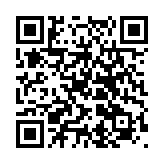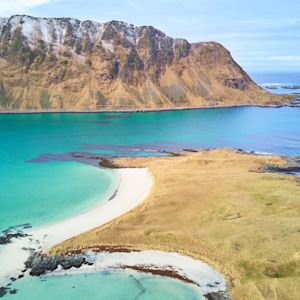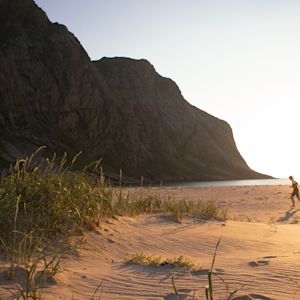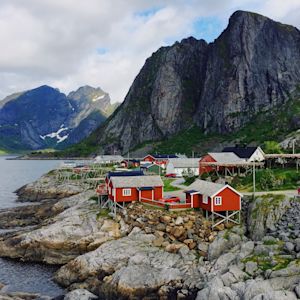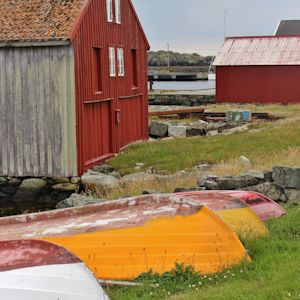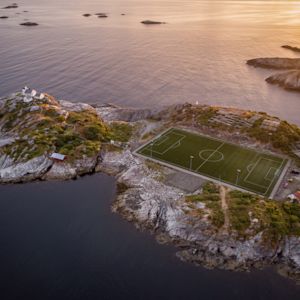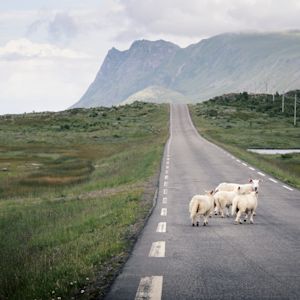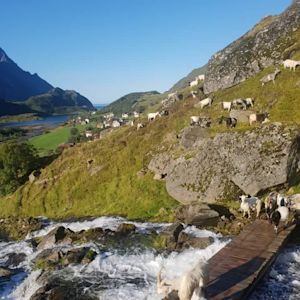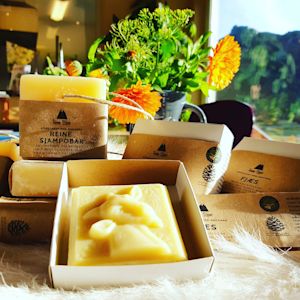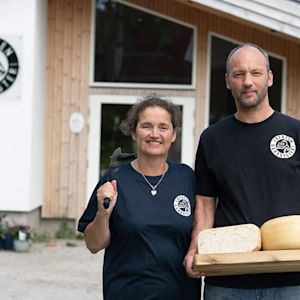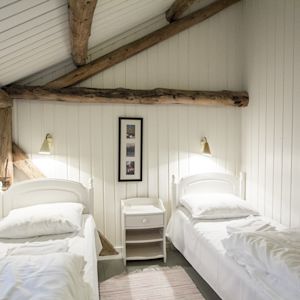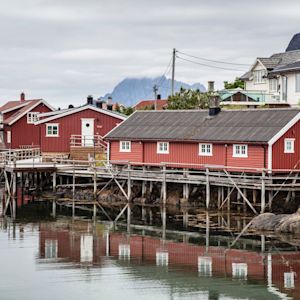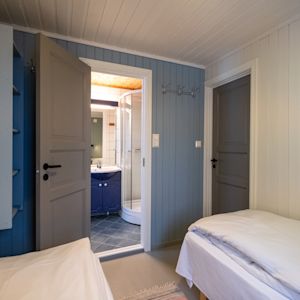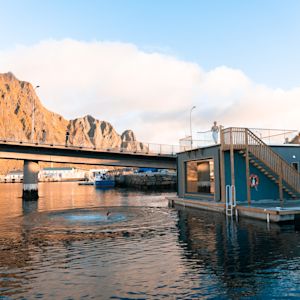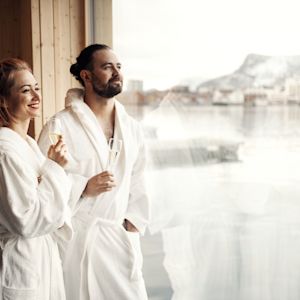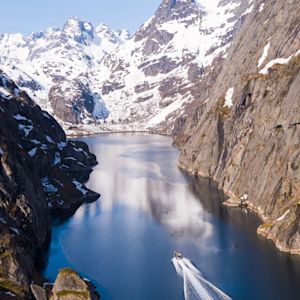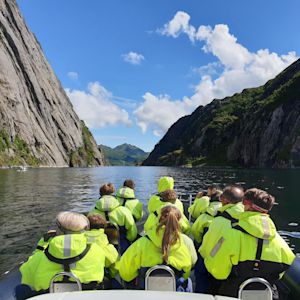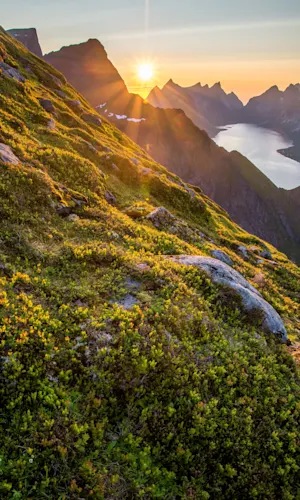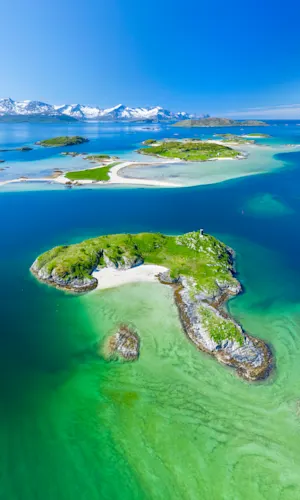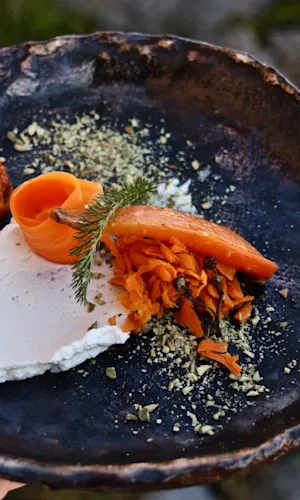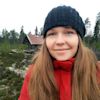Self-catering in Norway
Written by Jayde Kincaid, who married a Norwegian, and was happily (albeit with some hesitation) introduced to a world of Norwegian every day food habits.
At 50 Degrees North, we want to encourage our travellers to try local Norwegian food & drink. This may seem difficult in Scandinavia in general without a large budget, and in particular Norway. Some of the more remote villages you might visit have limited restaurants or cafes, some of which can be pretty expensive. There is certainly no street food! One way to get about sampling local food is by self-catering. You will find plenty of friendly locals in the small town grocery stores and supermarkets who will be happy to help you picking out local ingredients. Just don’t be shy – ask! And, don’t rush – make your local small town shopping part of your holiday experience. Read the local notice boards, and enjoy an ice cream out the front when you have finished. It is what the locals do!
Note: Statoil cups - a good idea to save money as you drive around Norway: purcahse a Statoil (petrol station) metal cup and you get free refills of coffee, tea and hot chocolate at the Statoil stations.
Grocery shopping in remote or far flung Norway:
Norway has an extensive range of grocery stores, and in most small villages you will find at least one, if not two or three grocery stores. However, they do have limited opening hours, and except for ‘Bunnpris’, they are all closed on Sundays. You will see the weekend hours shown in brackets on the store sign out front. If you are arriving in a larger town, we do suggest you stock up with some staples before you head out into the mountains or on a coastal drive.
A few tips:
• Plastic bags are NOK1-2 and you will always need to pack your own shopping.
• You can recycle your bottles and cans for a receipt that you can cash in. Recycling points are found in all stores.
• Alcohol sold in food stores (mainly beer and cider) is restricted by government regulation to certain hours. This varies slightly, but on weekdays alcohol sales stop at 8pm regardless and on Saturdays at 6pm. Outside these hours and on Sundays you can only buy alcohol in licensed restaurants or bars.
• Any alcohol over 4.7% can only be bought at special government controlled liquor store (Vinmonopolet). These are very rare in smaller remote towns and villages, so stock up before you leave the city.
Things to try from a general grocery store:
Meatballs or “meatcakes’: these come in all shapes, sizes and quality. They are generally really tasty and a bit better than what you find at IKEA. Also pick up a packet of dried ready-made brown sauce that goes with them. Be on the look out for Lingonberry sauce/jam, or even fresh lingonberries that you can use to make a fresh sauce (little red circular berries). Don’t add too much sugar, they are served quite tart.
If you want to try to make this brown sauce yourself, buy some ‘brunost’ (brown cheese), the required creams and follow the recipe below.
Hotdogs: known as ‘pølse’ in Norwegian, hot dogs are abundant in Norway. Cheap and cheerful – pølse is THE fast food of Norway. They are sold at service stations, newsagents, corner stores and fast food outlets. Pølse come with a dazzling variety of toppings and bread. Some of the pølse highlights would be the bacon wrapped ones, sprinkled with dried onion, mustards and mayonnaise. You will also find them wrapped in waffles (mostly in and around Fredrikstad) or the Norwegian pancake, ‘lompe’.
Note: there are strict requirements by the Food Safety commission for traditional pølse to be of the highest quality and they have even set requirements for what types of ingredients are allowed.
Like Norwegian beer, you will find seasonal pølse – Christmas pølse (Julepølse) is obviously found only in the lead up to the celebrations.
If you are planning to eat Norwegian style, use boil pølse on the stove and add to meals with potatoes and stew.
Note; steer away from tinned cheap pølse and meatballs.
Fish cakes: these also come in lots of variation and are generally served with a white sauce and lots of parsley. The Norwegians also use a basic white sauce on broccoli with cheese on top. These fish cakes are often found in fish shops, fried or steamed, ready to eat. A great fast snack.
Reindeer: we strongly suggest you try reindeer meat when you are travelling in the far north. It generally comes frozen, so look for finely cut reindeer meat in the freezer section. It is a more expensive option, but absolutely delicious albeit quite gamey. Be sure to get mushrooms, a small amount of brown cheese and rømme (crème fraiche). Fry it all up in a pan - a bit like a beef stroganoff. Serve with boiled potatoes or rice.
Mushrooms: if you are travelling in the chanterelle harvest season (mid/late August), be sure to try them. They are the yellow mushroom found in autumn. Or better still, have a look around the pine forests and pick some. Be sure to image search them before you head out so you know what to pick. They are really delicious with the brown cheese sauce and reindeer.
Salmon, prawns & fish: always be on the look out for a chance to buy fresh fish. Yes, it is possible to smooth talk a fisherman at the harbour. Or look for the local fish-kiosk or fish-shop. Be on the look out for small signs pointing you in the direction of fresh fish sales – ‘reker’ (shrimps, not prawns) or ‘fersk fisk’ (fresh fish) are the words you need.
Norwegians are very proud of their shrimps – and of course completely justified. Their shrimps are small and tasty and harvested from the cool North Sea. Norwegians traditionally serve them with mayonnaise and lemon. Peel them and pop them on a fresh white slice of bread. Mayonnaise is layered on top with dill, pepper & salt.
Smoked Salmon: Norwegian smoked salmon is the best in the world hands down. Be sure to try all the different varieties you see – often, in larger supermarkets or delis, you can try before you buy.
Tubed ‘kaviar’ (caviar): this is a must try. It is cheap and perfect for the travellers pantry. This is what my husband craves like an Australian abroad would crave vegemite.
Norwegian pre-made dips and salads: the Norwegian supermarkets have a large range of premade salads and dips. They last quite a while and are good fillers for sandwiches. Our favourite are the cubed beetroot salad and the potato salads. They come in easy-to-carry and pack-up containers – perfect for picnics. Tubed mayonnaise is also handy for picnics.
‘Leverpostei’ (liver pate) in many variations can also be found in the supermarket. This pate is normally served on brown bread then topped with sliced red onions or sweet pickles. Protein rich and very tasty if you like pate – it is found on most Norwegian breakfast tables.
Yoghurt: now – this is an interesting one. Norwegian yoghurt comes in a variety of styles - some can be very runny, sour and low fat. There are varying names/codes for each sort. You might like to check with a local when you are buying yoghurt to be sure you are getting what you want. Some of the yoghurt comes as though it is milk, in normal milk cartons - sour runny yoghurt is NOT nice in your coffee.
Bread: the Norwegian supermarket bread generally comes un-cut. You can either cut it in the shop – ask for help the first time you do it. They have industrial bread cutting machines near the bakery section. The bread can be quite plain in the main supermarkets so be on the look out for boutique bakeries in the larger towns if you enjoy fancy bread. Also keep an eye out for the Norwegian flatbread, Lefse, which is similar to Mexican tortillas. Usually served with butter and sugar, sometimes cinnamon too. Occasionally made with potato.
Waffles: Norwegian waffle stalls are similar to the sausage sizzle or hot dog stand. It is the most common fundraising or community building food product. Don’t expect sickly sweet jams or whipped cream – you will find these fresh chewy waffles served with sour cream and home made tart berry jams. Never go past one!
Chocolate: we recommend that you try the ‘FREIA’ milk chocolate during your stay. It melts in your mouth.
Berries: if you travel in early autumn (mid/late August) this is berry season. Forest berries that is. Ask a local and head up into the hills or forest in search for berries. You may find; blueberries, lingonberries, rasberries and if you are up north or in the central mountains; the rare yellow cloudberries.
Norwegian Farm Produce:
On a self-drive journey, always be on the look out for small farm shops or stands along the road. Things you cannot drive past:
Strawberries: if you are travelling in the strawberry season – you MUST try Norwegian strawberries. They are seriously amazing. Grown in the nutritious earth that has the chance to rejuvenate through a long winter.
_And if you go past a self-pick strawberry farm, put everything else on hold and enter! Norwegians wait all year for this event. _
New potatoes: be on the look out for new season potatoes – they are often sold in little stands beside the road. Often on an honesty basis; i.e. grab a bag and put the money in an allocated tin.
CLASSIC RECIPE:
Basic Brown Cheese Recipe – can be used with meatballs, reindeer, with added mushrooms.
• 2 tablespoons butter
• 2 tablespoons flour
• 3⁄4 cup light cream
• 1⁄2 cup chicken broth (optional - just use water if you cannot find this)
• 1 cup shredded gjetost or brown goats cheese
• 3⁄4 cup rømme (crème fraiche)
• 2 tablespoons chopped parsley or 2 tablespoons fresh dill
Method:
Using the meat dish that has been browned off, remove as much oil from the pan as possible and blend in butter and flour. Remove from heat and blend in light cream. Add chicken broth, bring to boil, stirring and cooking until thickened. Mix in Gjetost cheese. Turn heat low.
Blend some of the sauce into the rømme (crème fraiche), then return all to sauce. Add chopped parsley or fresh dill.
Happy shopping and cooking!


